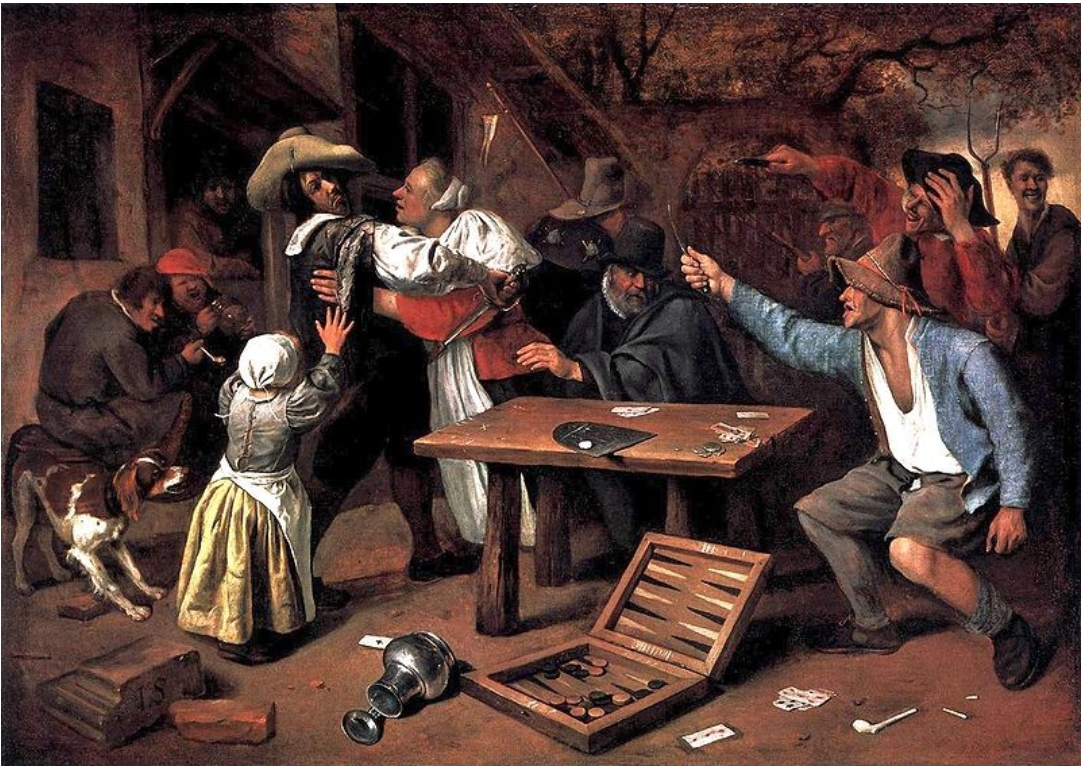9.2: The Impact of Interpersonal Conflict on Team Performance
- Page ID
- 53883
Learning Objectives
- Analyze the way in which conflict can both help and hurt a team’s performance
- Identify the causes of conflict within an organization as a conflict manager.
Conflict can have damaging or productive effects on the performance of a team.
Conflict occurs often in teamwork, especially during the storming phase of team development. While at first we might think of all conflict between team members as undesirable and harmful, the process of resolving conflicts can actually provide benefits to team performance. Whether a conflict is productive or not can depend on how team members perceive it, as well as how it affects progress toward the team’s goals.
Benefits of Team Conflict
Substantive conflicts can affect performance for the better by removing barriers caused by different assumptions or misunderstandings about a team’s tasks, strategy, or goals. Conflict can be constructive when it creates broader awareness about how team members are experiencing their work and thus leads to changes that improve members’ productivity. Conflict can also lead to process improvements, such as when it reveals a deficiency in how the team communicates, which can then be corrected. Clashes of ideas can lead to more creative solutions or otherwise provide perspectives that persuade the team to take a different approach that is more likely to lead to success.
Addressing personal conflicts that arise between members can facilitate cooperation by helping individuals adapt their behavior to better suit the needs of others. Although most people find conflict uncomfortable while they are experiencing it, they can come to recognize its value as the team progresses in its development.
Negative Consequences of Team Conflict
While sometimes conflict can lead to a solution to a problem, conflicts can also create problems. Discord caused by enmity between individuals can reduce team cohesion and the ability of team members to work together. Conflicts can create distractions that require time and effort to resolve, which can delay completion of tasks and even put a team’s goals at risk.
Communication can suffer when people withdraw their attention or participation, leading to poor coordination of interdependent tasks. Tension and heightened emotions can lower team members’ satisfaction, increase frustration, and lead to bad judgments. They can even prompt individuals to withdraw from the team, requiring the assignment of a new member or creating a resource scarcity that makes it more difficult for the team to fulfill its purpose. In extreme cases, conflict among members, if left unaddressed, can lead to the complete inability of the team to function, and thus to its disbandment.
Common Causes of Team Conflict
Team conflict is caused by factors related to individual behavior as well as disagreements about the team’s work.
Conflict between team members comes from several sources. Some conflicts have their basis in how people behave, while others come from disagreements about the nature of the team’s work and how it is being accomplished.
- Competing interests: Conflict can arise when people have mutually incompatible desires or needs. For example, two team members with similar skills may both want a certain assignment, leaving the one who doesn’t receive it resentful.
- Different behavioral styles or preferences: Individuals may clash over their respective work habits, attention to detail, communication practices, or tone of expression. While these can affect coordination of interdependent tasks, they can especially inhibit direct collaboration.
- Competition over resources: Members may fight over the limited resources available to accomplish the team’s tasks. For example, if two people both rely on the action of a third person to meet identical deadlines, disagreements might arise over whose work should receive that person’s attention first.
- Failure to follow team norms: A team member creates conflict when she displays attitudes or behaviors that go against the team’s agreement about how it will function. If a group norm calls for prompt arrival at meetings and prohibits the use of mobile devices during discussions, ignoring these practices can engender conflict.
- Performance deficiencies: When some team members are either not contributing their share of effort or not performing at the expected level of quality, the impositions that result can create friction, which may be heightened when critical or highly visible tasks are involved.
- Poor communication: When team members do not share relevant information with each other, people may make decisions or take actions that others consider inappropriate or even harmful. Blame and questions about motives can result, creating discord among the team.
- Ambiguity about means and ends: Lack of clarity about tasks, strategies, and/or goals can lead people to make assumptions that others do not share or agree with, which can result in conflict.

Key Takeaways
Key Points
- Conflict is common within teams, especially during the storming phase of team development.
- Team conflict provides benefits including resolving misunderstandings, improving processes, and changing behaviors.
- Team conflict can have negative consequences such as reduced group cohesion and lower productivity, and it can even threaten the team’s existence.
- Team conflict arises from how people perceive the actions of others and from differing views of the team’s work and how it should be accomplished.
- Common causes of team conflict include conflicting interests, incompatible work styles, competition over resources, failure to follow norms, poor communication, and performance deficiencies.
Key Terms
- interdependent: Mutually dependent; reliant on one another.
- affective: Relating to, resulting from, or influenced by emotions.
- ambiguity: Something liable to more than one interpretation, explanation, or meaning.
- affective: Relating to, resulting from, or influenced by emotions.


